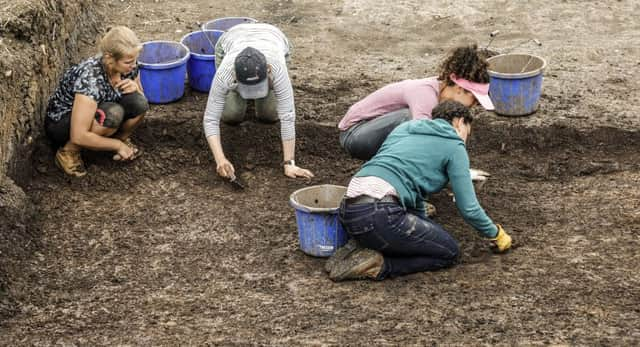Feature: The secrets of the '˜mystery marsh' in Little Carlton


The University’s Archeology Department visited the site last Spring and unearthed the remains of an Anglo-Saxon island, which experts dubbed “one of the most important archaeological finds in decades”.
The exciting discovery was made after a local metal detectorist stumbled across an intriguing item - which was later revealed to be an ornate silver stylus dating back to the eighth century - and reported it to the Lincolnshire Finds Liaison Officer, from the Portable Antiquities Scheme.
Advertisement
Hide AdAdvertisement
Hide AdAs it turned out, this stylus was the first of many unusual items discovered on the site, which held important clues to the significant settlement beneath the ground.


Among them was a total of 21 styli, around 300 dress pins, and a huge number of ‘Sceattas’, coins from the 7th-8th centuries, as well as a small lead tablet bearing the faint but legible letters spelling ‘Cudberg’ which is a female Anglo-Saxon name.
Further geophysical and magnetometry surveys were carried out on the site, along with 3D modelling to visualise the landscape on a large scale.
It was determined that the site was probably a previously unknown monastic or trading centre but researchers believe their work has only revealed an enticing glimpse of the settlement so far - and so, they returned to Little Carlton at the beginning of July to investigate further.
Advertisement
Hide AdAdvertisement
Hide AdDr Hugh Willmott, Senior Lecturer in European Historical Archaeology at the University of Sheffield, brought along his team of student archeologists to begin digging on the site on July 2.


Within just two days, the team had already discovered a stylus and an incised bone wooden handle.
Just a few days later, a complete copper pin was discovered in the middle layer at the excavation site, and a tiny Saxon buckle was also found by one eagle-eyed archeologist. A perfect ‘hook tag’ was also discovered, which had been preserved in the soil for over 1,000 years.
As the weeks have gone by, further discoveries have included a decorated spindle whorl, the rim of a blue glass Saxon beaker, and a Saxon whet (sharpening) stone.
Advertisement
Hide AdAdvertisement
Hide AdHalf of an Ipswich ware pot and a fully excavated wooden object were also found in a gully on the site.
• For updates and photographs of the latest finds at Little Carlton, follow @Hugh_Willmott on Twitter.